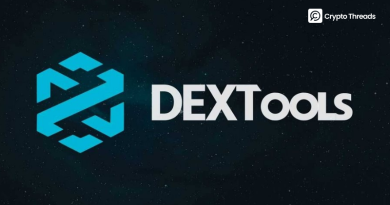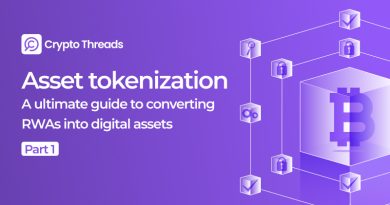The Expanding Ecosystem of TON The Open Network (Part 2)

Advanced Framework and Technology
Adaptive Infinite Sharded Multi-Chain Architecture
The blockchain architecture of TON is a revolutionary method for efficiency and scalability. An adaptive, indefinitely sharded multi-chain system that is designed to handle transactions over several chains concurrently forms its basis. The Masterchain, Workchain, and Shardchain are the three primary parts of the architecture.

TON Adaptive Infinite Sharded Multi-Chain Architecture
The Masterchain serves as the coordinating hub, maintaining critical network data, including protocol parameters, validators, active Workchains, and Shardchain structures. Child chains submit their latest block hashes to the Masterchain, ensuring real-time state synchronization and seamless cross-chain communication.
Workchains, in turn, are highly customizable virtual collections of Shardchains. TON can accommodate up to 2³² Workchains, each tailored to unique requirements like address formats, native tokens, or virtual machine preferences, provided they comply with TON’s interoperability standards.
To enhance processing efficiency, Workchains are further divided into Shardchains, each capable of holding up to 2⁶⁰ units. A Shardchain dynamically splits into two during high traffic and merges back when the load decreases. This flexibility allows the system to adapt fluidly to changes in network activity, ensuring seamless parallel transaction processing across multiple chains.
Message Delivery Mechanism
TON implements asynchronous message delivery along with hypercube routing for communication efficiency. Through the mechanism of asynchronous messaging, smart contracts maintain autonomy by treating messages based on logical time (Lamport time) to ensure appropriate event sequencing.
The classes of messages follow hypercube routing so that in a multi-dimensional Shardchain, messages will effectively go from one point in space to another. It helps in fast message delivery across nodes, even in advanced setups with multiple Workchains and Masterchains. Such a radical design improves the network’s fault tolerance and scalability, making it one of the most efficient blockchain communicators.

The Hypercube Architecture of TON (Source: PixelPlex)
Consensus Mechanism: Catchain
TON uses a Byzantine Fault Tolerance (BFT)-inspired consensus algorithm, called Catchain. It is composed of multiple layers that enable the generation and validation of blocks to happen securely and reliably.
The Block Consensus Protocol (BCP) of XTS offers a Catchain protocol upon which it achieves consensus between the validator group on new block submissions. Catchain maintains ongoing communication among validators and addresses protocol violations in real-time. Overlay protocols are the ones that enhance message broadcasting and node connectivity within the TON Network. Collectively, these mechanisms reinforce the TON consensus framework, providing a high degree of robustness and security.
Key Distinctions
TON differentiates itself from other blockchains like Ethereum and Solana through unique features in resource management and asynchronicity. Each smart contract in TON is responsible for covering its own resource costs, which include computation, storage, and transmission, ensuring efficient resource utilization. Additionally, its asynchronous architecture enables delayed execution of smart contract interactions, enhancing scalability while simplifying resource management.
Native Components Driving the Ecosystem

Key Features of TON Ecosystem (Source: Crypto Pragmatist)
TON Storage
TON Storage, a decentralized peer-to-peer file-sharing system based on BitTorrent technology that allows for efficient storage and retrieval of files. It supports hosting for blocks, blockchain snapshots and static sites but is popularly referred to as “Decentralized Amazon S3.” So developers can deploy smart contracts to store and deliver files, and we plan to create more user-friendly applications and APIs like TON Torrents.
TON Proxy
TON Proxy enhances privacy by anonymizing node connections and enabling access to .ton sites hosted on TON Storage. This proxy layer is designed to secure IP addresses and is envisioned to evolve into an anonymous I2P-like network where users can operate intermediate nodes and earn revenue.
TON Payments
TON Payments offers a micropayment platform similar to Bitcoin’s Lightning Network. Supporting off-chain transactions, it enables low-cost payments within the ecosystem. Telegram’s @Wallet bot facilitates virtual currency payments, P2P transactions, and cryptocurrency purchases. Future plans include a merchant marketplace and multi-node networks to streamline micropayments.
TON Space
TON Space is a self-hosted wallet integrated into Telegram, allowing users to manage their private keys and interact with smart contracts. Currently in beta, it provides basic payment functions and will eventually support the entire TON ecosystem, including Toncoin, Jettons, and collectibles.
Telegram Apps Center
You can experience web apps, games, and Telegram bots all in its Apps Center. Dedicated submission tools are used by developers to display their work, and the official website, Telegram channels, and bots are how users access the ecosystem.
Modern technology, a wide range of native components, and this innovative architecture enable TON to reshape the blockchain space and usher in a new era of decentralization, scalability, and usability in this digital world.



